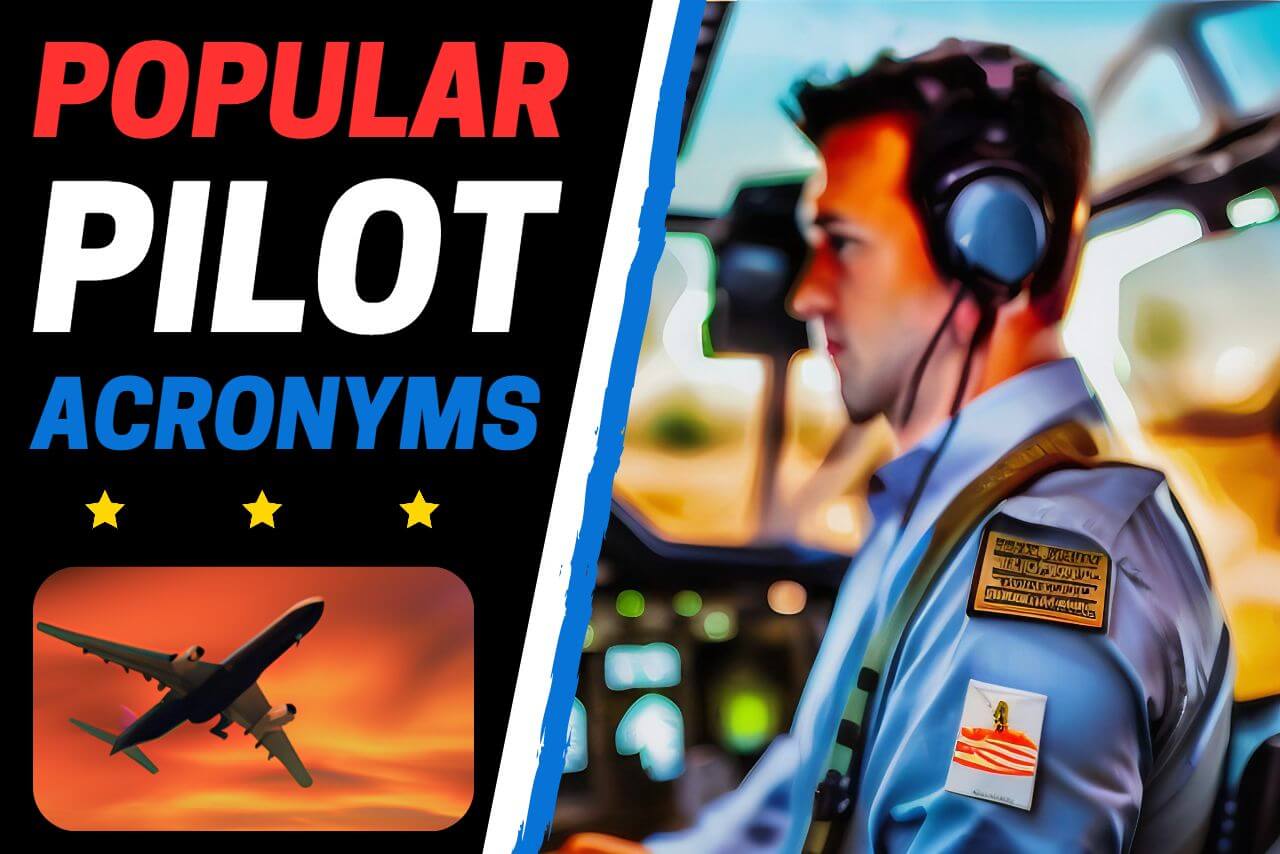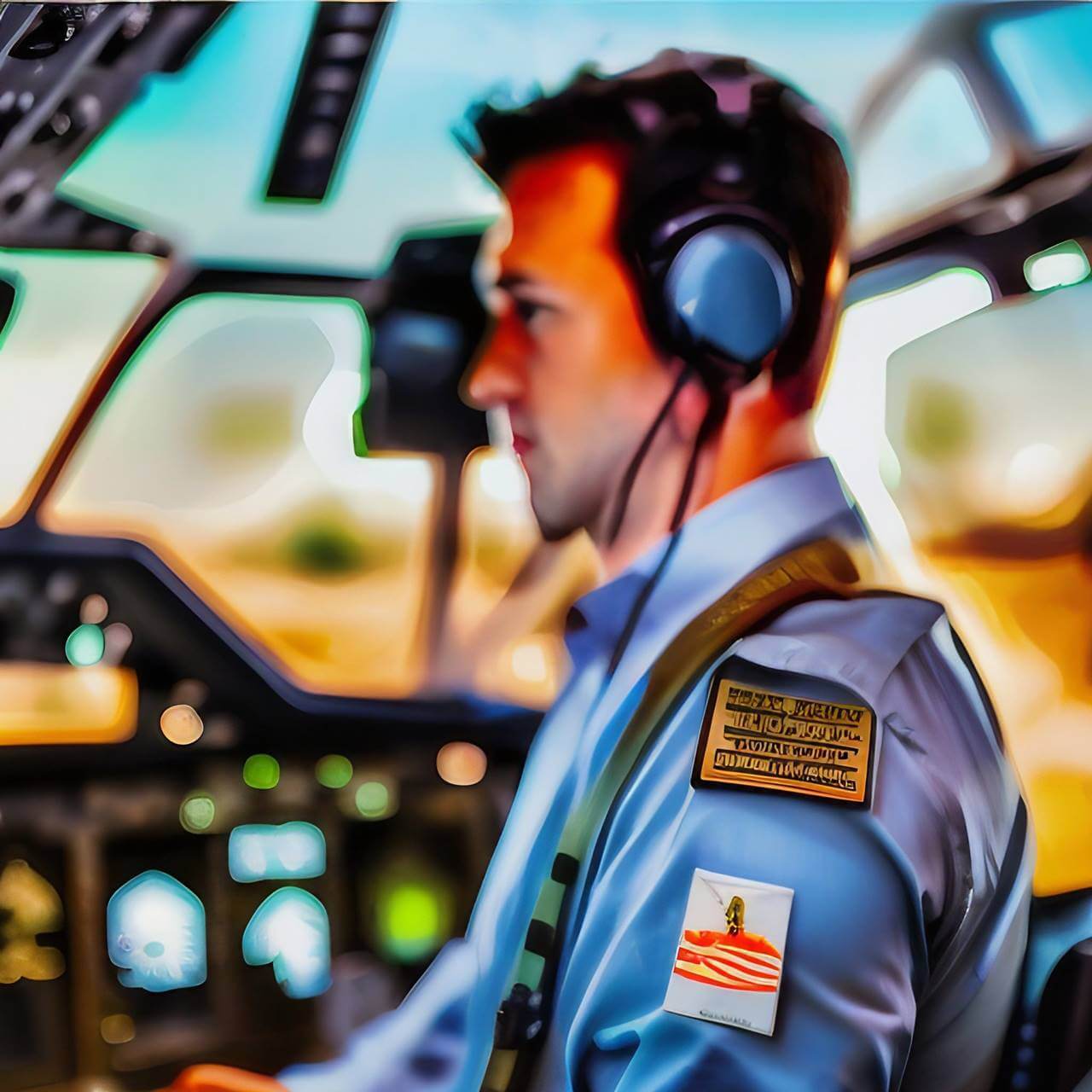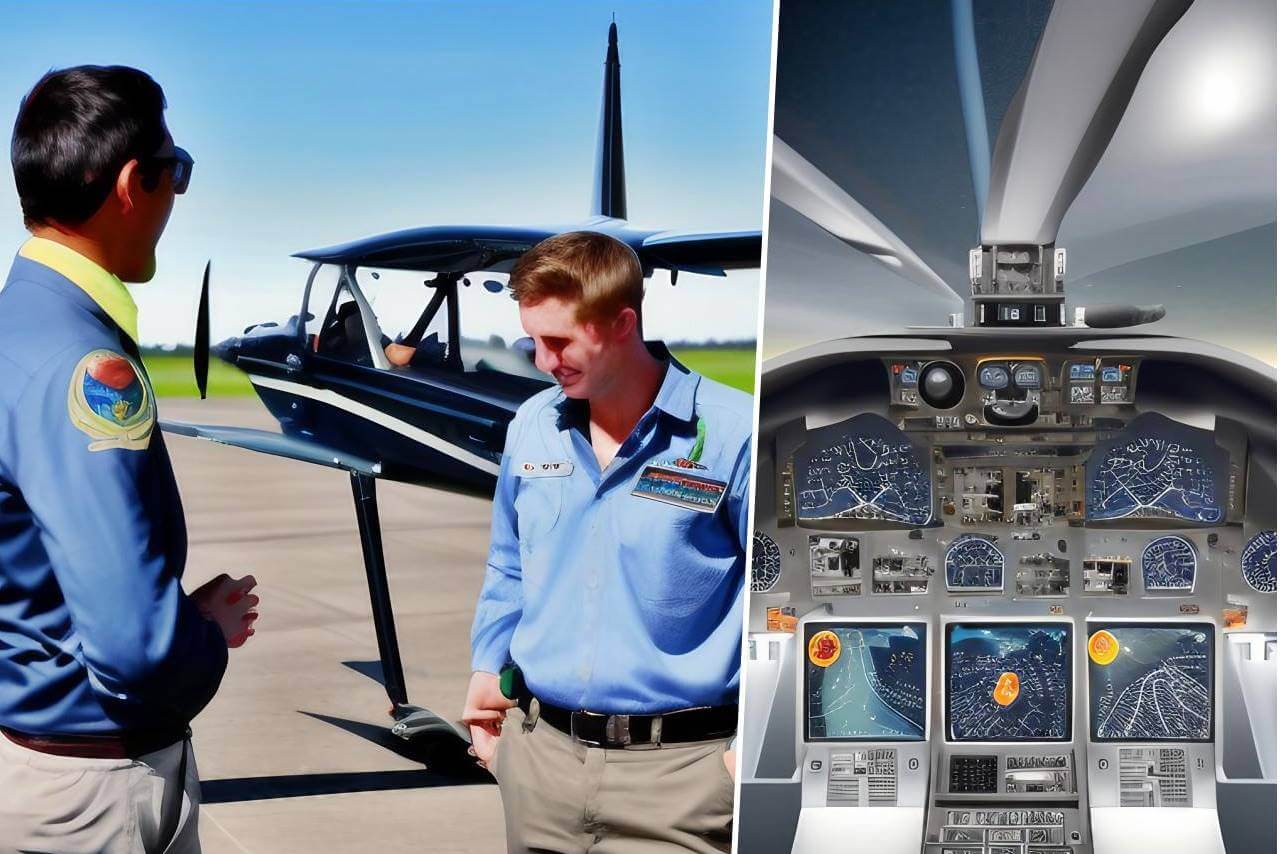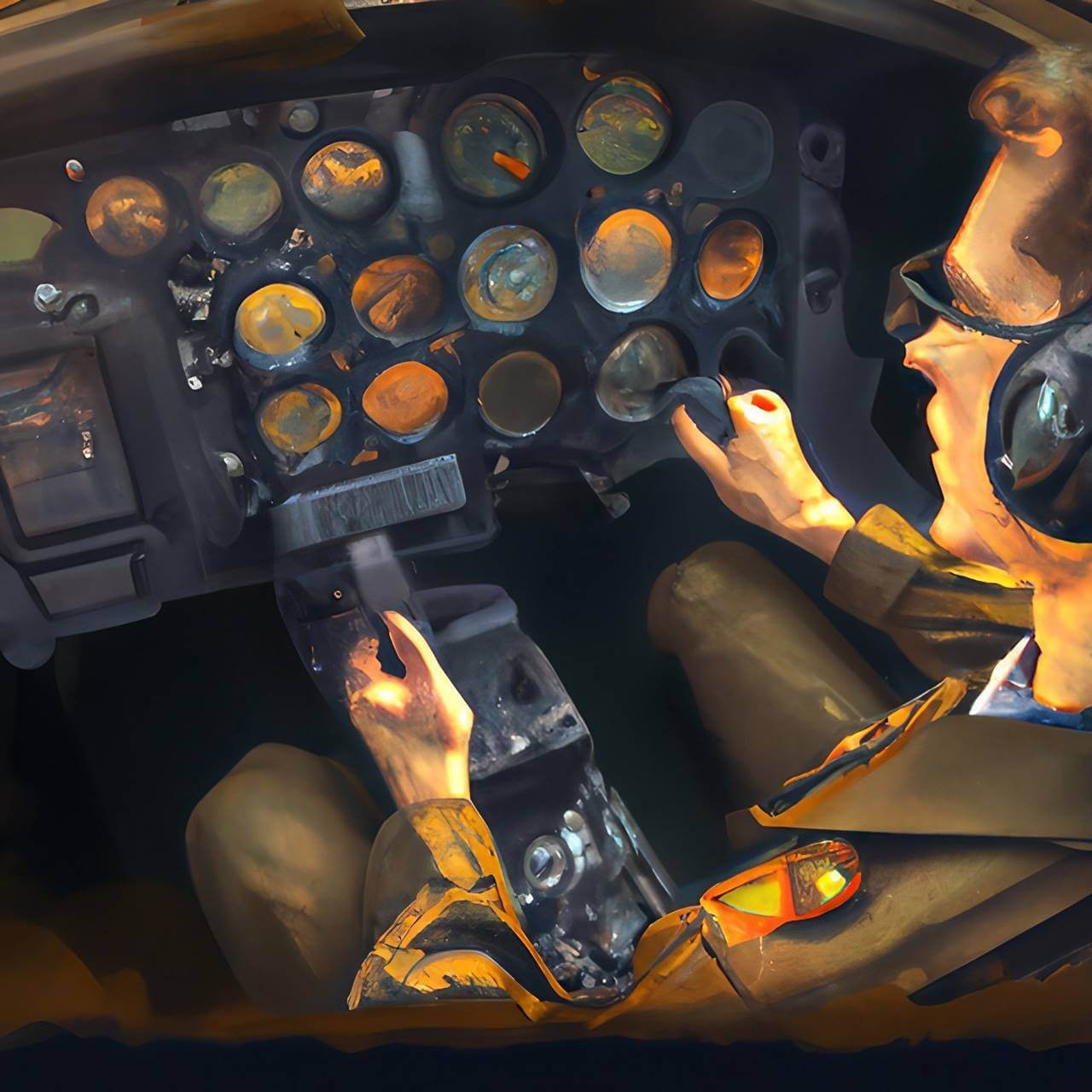The world of aviation is filled with acronyms and abbreviations that can be daunting for new pilots to learn. Fortunately, there are some common acronyms that are used frequently in flight operations and they can be easily remembered. Student pilots need to learn these acronyms, and mnemonics from the onset in order to be able to communicate accurately with ATC, their flight instructors, and fellow private pilots.
Acronyms are very useful in aviation because they allow a pilot to communicate more quickly, clearly, and concisely. But to all aspiring pilots, you may get overwhelmed by the number of acronyms in the aviation industry. Even just the flight training alone has its own vocabulary of its own. Be advised that it gets easier with time and practice.
These terms are used so that pilots can easily memorize and communicate the information without having to spell out every single word. Below is a list of some common acronyms used in aviation.
Contents
- What are Private and Commercial Pilot Acronyms and Mnemonics?
- IMSAFE
- PAVE
- SAFETY
- ARROW
- AVIATES
- ATOMATOFLAMES
- FLAPS
- NWKRAFT
- GRABCARD
- ANC
- DECIDE
- 3 Ps
- 5 Ts
- GUMPS
- Video: Aviation Guide to Top 5 Acronyms and Pnemonics for Private Pilots
- Frequently Asked Questions
- 1. What is the most important acronym for pilots to remember?
- 2. How do I make sure I understand pilot acronyms if I’m new to flying?
- 3. Why are these pilot acronyms important?
- 4. The acronyms above are different from the ones being taught in my pilot school, why is this?
- 5. How often should pilots review the acronyms used in their area?
- 6. Why are there so many acronyms?
- 7. How will I remember all the acronyms?
- Summary

What are Private and Commercial Pilot Acronyms and Mnemonics?
Acronyms and mnemonics are used in aviation to help pilots remember important information and procedures. Pilots, whether they are flying small aircrafts without the assistance of a co-pilot or commercial ones who are carrying hundreds of passengers in a plane, can benefit from using these terms as it makes managing many inspections convenient.
Using these abbreviations and systems can help pilots easily remember important checklists, procedures, and other aviation-related information. For example, the acronym “AV1ATE” can be used to remember the six required inspections of their aircraft before it should take off. Another thing is the mantra “ANC” which is Aviate – Navigate – Communicate, and should help pilots go back to the basics of what steps to take and what their role is during the flight.
While these acronyms may differ according to aircraft, flight school, and the aviation industry in your country, it is still necessary to know some of these popular pilot acronyms and terms.
IMSAFE
IMSAFE refers to an acronym used by pilots and instructors to assess a pilot’s fitness level if they are capable of flying or not. This is done before every flight.
- I – Illness
- M – Medication
- S – Stress
- A – Alcohol
- F – Fatigue
- E – Emotions/Eating/Everything Else
IMSAFE is essential for every pilot to assess their mental and physical state before getting into the cockpit.
PAVE
PAVE is a checklist acronym used to assess the conditions and risks under which a pilot is flying and will help determine if the pilot decides to cancel or continue the flight.
- P – Pilot in Command (PIC)
- A – Aircraft
- V – enVironment
- E – External Pressures
Pilots can easily remember each aspect of risk to examine prior to flying with the PAVE checklist. When identified, they must decide if the risks are manageable or not; otherwise resulting in canceling their flight. This way, pilots have a straightforward approach to ensuring safety before every takeoff!
To minimize any potential risks, the pilot should formulate a plan for continuing with their journey. For instance, they can create personal minimums in each risk category to suit their level of experience and capability. By setting these individualized limits, the pilot will be able to maintain control over all possible threats throughout the flight.
SAFETY
SAFETY is an acronym that reminds pilots to brief their passengers prior to takeoff, especially in the case of commercial flights.
- S – Seat Belts
- A – Air Ventilation
- F – Fire Extinguisher
- E – Emergency Procedures
- T – Traffic Pattern
- Y – Your Questions
By briefing your passengers on the above items, everyone will be aware of all safety procedures to follow in any situation. This way, if an emergency arises, everyone can act according to plan and remain safe.
ARROW
ARROW is an acronym that represents documents that should be onboard the aircraft. They stand for:
- A – Airworthiness Certificate
- R – Radio Station License
- R – Registration Certificate
- O – Operation Limitations
- W – Weight and Balance
These documents are essential for a pilot’s flight operations and should be kept onboard the aircraft in order to fly.

Also Read: How Many Passengers Can a Private Pilot Carry?
AVIATES
AVIATES (with the I spelled as the number 1) is an inspection acronym to validate the airworthiness of an aircraft. Airworthiness is a requirement needed in order to check if the actual airplane has done its required inspections.
- A – Annual Check
- V – VORs
- 1 – 100 Hour Check
- A – Altimeter/Pitot Static
- T – Transponder
- E – Emergency Location Transmitter
- S – Static Inspection
Pilots should always verify the airworthiness of their aircraft prior to takeoff and AV1ATES can help you memorize these instruments to inspect. This way, you can ensure that the aircraft is in good condition and any potential risks are minimized!
ATOMATOFLAMES
Student pilots are educated with the ATOMATOFLAMES checklist, which includes all necessary instruments and equipment in compliance with Federal Aviation Regulation (FAR) 91.205 for flight. ATOMATOFLAMES is a list of equipment needed for VFR Day flights.
- A – Altimeter
- T – Tachometer
- O – Oil Pressure Gauge
- M – Magnetic Compass
- A – Airspeed Indicator
- T – Temperature Gauge
- O – Oil Temperature Gauge
- F – Fuel Gauge
- L – Landing Gear Extension Lights
- A – Anti-Collision Lights
- M – Manifold Pressure Gauge
- E – ELT (Emergency Locator Transmitter)
- S – Seatbelts
FLAPS
While ATOMATOFLAMES is a list of requirements during day flights, pilots still need to learn an additional set of required instruments on the plane during night flights. FLAPS is an acronym representing the minimum equipment requirements during VFR Night flights.
- F – Fuses
- L – Landing Light
- A – Anti-Collision Lights
- P – Position lights
- S – Source of power
NWKRAFT
NWKRAFT is a checklist acronym that should be validated before every flight. It makes it easy for pilots to recall all the important preflight action items required as per 14 CFR 91.103. This is invaluable information, and pilots must familiarize themselves with these components before taking off.
- N – NOTAMs (A NOTAM is a notice with essential information about flight operations.)
- W – Weather
- K – Known Air Traffic Control (ATC) Delays
- R – Runway Lengths
- A – Alternate Airport
- F – Fuel
- T – Takeoff and Landing Distances
GRABCARD
In aviation, GRABCARD is a valuable acronym for pilots to remember which includes the minimum equipment required under Instrument Flight Rules (IFR).
- G – Generator or Alternator
- R – Radio/Navigation Appropriate For Flight
- A – Attitude Indicator
- B – Ball (Inclinometer)
- C – Clock
- A – Altimeter
- R – Rate of Turn Indicator
- D – Directional Gyro
ANC
In aviation, it is critical to remember that “Aviate, Navigate, Communicate” should be the priority order in any circumstance — particularly a crisis. Studies have shown how easily pilots tend to get preoccupied with solving a problem during an emergency and forget about flying the plane altogether. This is a basic mantra that pilots need adhere to always to prevent pilot errors. ANC stands for:
- A – Aviate
- N – Navigate
- C – Communicate
These three words represent the order in which pilots should focus on during any emergency or situation. To break it down: first, ensure the aircraft is functioning; next, define your destination, and only after that, engage with any other personnel.
DECIDE
DECIDE is the acronym for decision-making, which is a crucial part of any pilot’s operations. Timely and accurate decision-making is paramount to safety in aviation. Consequently, the ‘DECIDE’ model has been developed to help not just pilots but anyone makes well-informed decisions quickly.
- D – Detect
- E – Estimate
- C – Choose
- I – Identify
- D – Do
- E – Evaluate / Execute

3 Ps
This three-step process offers a simple, systematic approach to accomplishing each task during all phases of flight. To ensure the safety of your flight, it is essential to understand all relevant details regarding your journey. Process this data and assess its impact on security before deciding which path to take. Subsequently, act upon that choice for successful execution. As you progress through each step of the process, be sure to evaluate and analyze any results as new information becomes available for further consideration.
- P – Perceive
- P – Process
- P – Perform
5 Ts
Whenever you approach a fix or navaid, use the Five-Ts mental checklist to keep track of your progress. Not every item might be relevant in each situation; however, always ask yourself what comes next. The 5 Ts can help you stay one step ahead and determine what needs to be done after finishing any current task.
- T– Turn
- T – Time
- T – Twist
- T – Throttle
- T – Talk
- T – Track
GUMPS
GUMPS is an easy way to remember all the essential items to inspect prior to takeoff and landing. This acronym has become a reliable foundation for double-checking that no essential element is overlooked in the plane.
- G – Gas (Fuel)
- U – Undercarriage
- M – Mixture
- P – Propeller
- S – Seat Belts and Switches
Gas (is the fuel tank full and its pump already switched on?) Undercarriage (have you made sure that all landing gear is in place?), Mixture (is the fuel mixture set properly checked? ), Propeller (has an inspection of propellers been completed?), Seat belts & Switches (don’t forget to fasten your seatbelts, pilots and passengers alike!). This GUMPS check ensures aviation safety before take-off.

Also Read: 22 Best Jobs for Ex-Cabin Crew | Career Options for Ex Flight Attendants
Video: Aviation Guide to Top 5 Acronyms and Pnemonics for Private Pilots
Here’s a video clip by Brodie Brazil, a Commercial Pilot & Certified Flight Instructor, as he talks about the top acronyms he uses that fellow pilots might use during their flights:
Brodie mentions that these acronyms may differ from the ones you’ll hear from other pilots or during your training, and that’s okay. The important thing is that if you are a pilot on flight training, you should follow the acronyms used by your instructor as this is what is being implemented by your training school and the aircraft in your area.
Using acronyms and mnemonics can improve communication between pilots and air traffic control (ATC). By using standard phrases and abbreviations, pilots can communicate more efficiently and effectively with ATC, improving safety and reducing the risk of miscommunication.
Overall, the purpose of common private pilot acronyms and mnemonics is to improve safety, efficiency, and communication in aviation. By using these tools, pilots can remember important information and procedures, communicate effectively with ATC, and ultimately have a safer and more enjoyable flying experience.
Frequently Asked Questions
1. What is the most important acronym for pilots to remember?
All of the acronyms listed above can be useful for pilots. However, SAFETY is likely the most essential acronym for pilots to remember as it encompasses a range of important safety measures that all pilots should practice.
2. How do I make sure I understand pilot acronyms if I’m new to flying?
The best way to make sure you understand pilot acronyms correctly is to ask your flight instructor or fellow pilots questions when you are unsure or unfamiliar with a particular acronym. Additionally, attending regular training sessions and reviews can help keep you up to date on any changes in industry terminology or new acronyms that you may come across.
3. Why are these pilot acronyms important?
Pilot acronyms are important because they help to streamline communication between pilots, air traffic controllers and other personnel involved in aviation operations. They provide a short-hand way of expressing technical information in an efficient manner. This makes it easier for pilots to quickly share information without having to use long words or phrases.
4. The acronyms above are different from the ones being taught in my pilot school, why is this?
Acronyms may vary from school to school and from region to region. It’s important for pilots to be aware of the acronyms being used in their specific area so that they can communicate effectively with air traffic controllers, flight instructors, and other aviation personnel.
5. How often should pilots review the acronyms used in their area?
Pilots should review the acronyms used in their flight training program, as well as those used in their local airspace, at least once a month to ensure accuracy and comprehension. Additionally, pilots who are attending regular training or reviews should pay close attention to any changes that may occur so they can keep up with them. Remember that flight updates are constant and the aviation industry is always evolving so it is important to stay up-to-date on the terms and acronyms used in your area.
6. Why are there so many acronyms?
It is what it is. The use of acronyms in aviation is necessary to condense the amount of information pilots need to remember and communicate. This makes it easier for those involved in aviation operations to quickly share information with one another without having to use long words or phrases.
7. How will I remember all the acronyms?
As with many things in life, familiarity breeds comfort. Acronyms become more natural to use after they’ve been used and studied frequently. With enough time spent around them, acronyms will eventually be second nature.

Summary
Acronyms have always been an important part of aviation communication because they make it easier for pilots to quickly share information without having to use long words or phrases.
Understanding the most common pilot acronyms is essential for student pilots and experienced aviation professionals alike. Being aware of these terms and mnemonics gives pilots a better chance of being prepared and communicating effectively while in flight.
It’s also important to keep up with any changes that may occur over time, as this can help ensure accuracy and safety during operations. With practice, learning the acronyms used for aviation will become second nature for pilots.
Disclaimer: Please note that this article is for educational purposes only and is not to be used as a substitute for professional advice. Please consult an aviation expert before taking any flight-related action. If you are a student pilot undergoing flight school, refer to the acronyms used by your instructor as this is what is being implemented by your training school and the aircraft.
